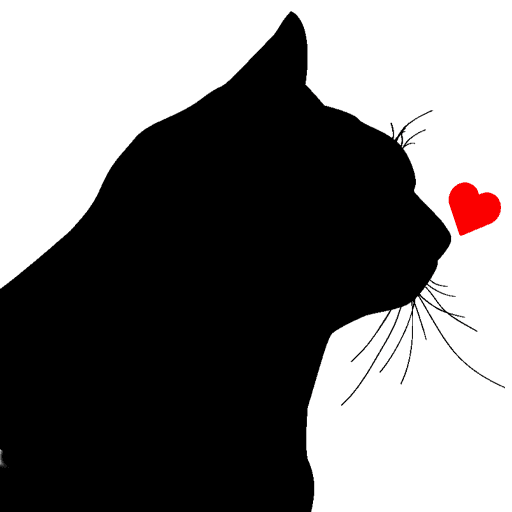Are you concerned about why your Cat Regurgitation Vs. Vomit? You want to know the difference between the two, as one might require more serious medical attention than the other. This comprehensive guide will take an in-depth look at cat regurgitation versus vomiting to help you distinguish between them and assess your cat’s health accordingly.
Table of Contents
- What Is the Difference Between Cat Regurgitation Vs.? Vomit?
- What Are the Causes of Regurgitation and Vomiting?
- What Information Can We Get From the Color of Cat Vomit
- How to Treat Regurgitation in Cats at Home
- Conclusion
What Is the Difference Between Cat Regurgitation Vs.? Vomit?
Stomach Vs. Esophagus
Regurgitation occurs when food is obstructed in the esophagus and moves out via the mouth. Meanwhile, vomiting occurs when the stomach contents move out via the mouth.
Active Vs. Passive Processes
Regurgitation is a passive process – it doesn’t involve muscle contractions for food movement up the gut. It’s an almost-instant process that occurs before ingested food hits the stomach. Moreover, there are no warning signs – the kitty lowers its head and lets out the undigested food via the mouth. Vomiting, on the other hand, is an active thing. The cat’s stomach muscles contract and expand to facilitate the upward movement of ingested content. Warning signs include retching, lip licking, and increased salivation.
Runny Vs. Tube-Shaped
Regurgitated content has a tubular shape as it takes on the shape of the esophagus. It is a firm mold of undigested content alongside mucus, hair, and saliva. Vomited matter, meanwhile, is more runny and watery. Furthermore, it originates from the stomach and typically contains phlegm, bile, and lumps of digested content.
What Are the Causes of Regurgitation and Vomiting?
Regurgitation
An obstruction in the esophagus – due to the following factors – may cause regurgitation issues.
- Large hairballs
- Ingested foreign bodies
- Vascular ring anomalies
- Throat tumors
These obstructions compromise food passage down the digestive tract. So, consult a vet to tackle them as soon as possible.
Motility issues could also cause regurgitation in cats. Examples of motility issues include the following:
- Polymyopathy
- Acquired neuromuscular disease
- Polyneuropathy
- Esophagitis
Call your vet to treat the underlying causes of these motility issues. Treatment may include surgery, chemotherapy, and medication.
Vomiting
The following factors may cause chronic vomiting in cats.
- Inflammatory bowel disease (IBD)
- Blockages due to tumors and cancers
- Intestinal infections of parasitic worms
- Intestinal blockage due to foreign-body ingestion
- An inflammation of the intestines or stomach
- Viral and bacterial infections of the intestines and stomach
These are serious conditions; you should call your vet to tackle them. Otherwise, your cat might get dehydrated and become weak or lazy.
What Information Can We Get From the Color of Cat Vomit
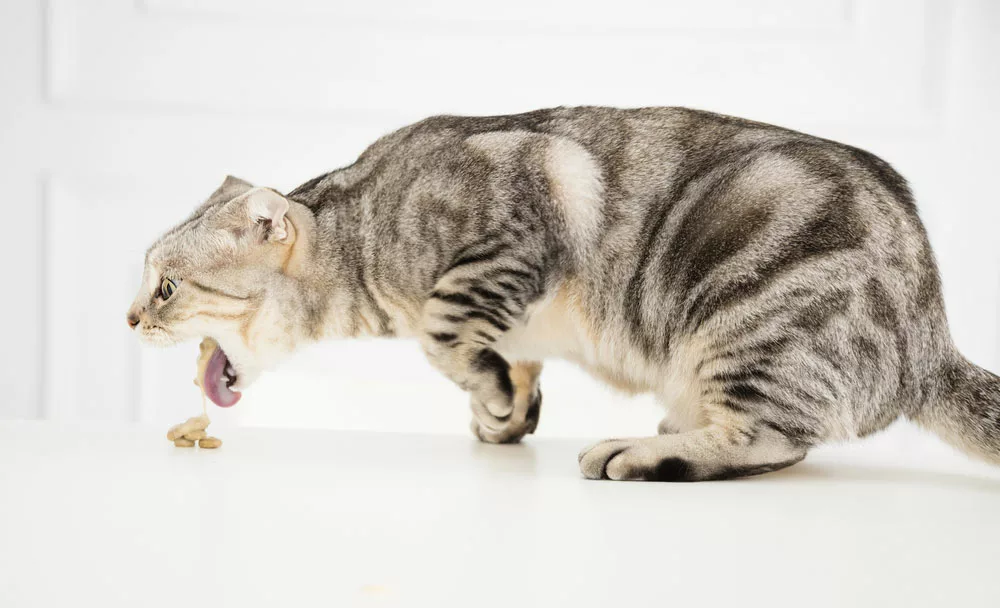
A sick cat is vomiting ingested food.
- Red: Red vomit usually contains blood. So, unless your cat has eaten a non-toxic red substance, call your vet immediately.
- Black: If your cat’s vomit is black and has lumps like ground coffee, the feline is likely bleeding in the stomach.
- Greenish or yellowish: If it’s watery, it’s probably bile, which could be a symptom of an underlying illness. If it’s smoothie-like, it might be partially digested food.
- Pink: Pink vomit likely contains blood in trace amounts. If it’s more of a smoothie than watery, it could be content from salmon-colored food.
- Green: This is likely digested plant matter.
- Clear or foamy: Your cat has likely vomited stomach acid – which tends to form on an empty stomach. Clear or foamy vomit could also be undigested water.
How to Treat Regurgitation in Cats at Home
Feed Smaller Meals
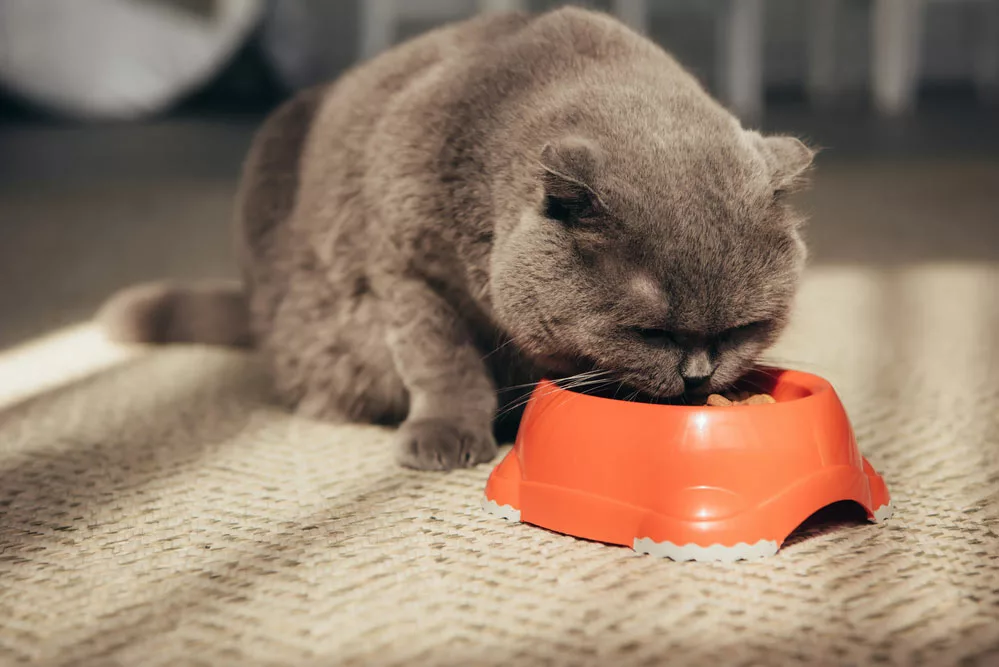
A Scottish cat is eating food.
Feed your cat smaller portions frequently. This way, it’s more likely to take its time eating the food than gulping it down almost at a go. Still, in case it eats quickly, it’s less likely to overload its digestive system at once. The gut will have time to digest the small portion before the next one arrives.
Use Puzzle Feeders
Use puzzle feeders (hollow bowls with tiny holes) to feed your cat kibble (dry food). You only need to put cat biscuits into the bowl, and then your kitty will have to move the bowl around for the biscuits to pop out. For wet food, use slow feeder plates, which are flat silicone plates with a groove at the bottom. You only need to push the food down into the crevices of a feeder plate before your cat licks it out.
Feed Cats Separately
If you own many cats, feed them separately so they don’t compete to eat during mealtimes. Put the bowls in separate areas or use collar-activated cat feeders. This way, your kitties won’t feel rushed and will likely eat slowly, reducing regurgitation frequency.
Limit Water Intake
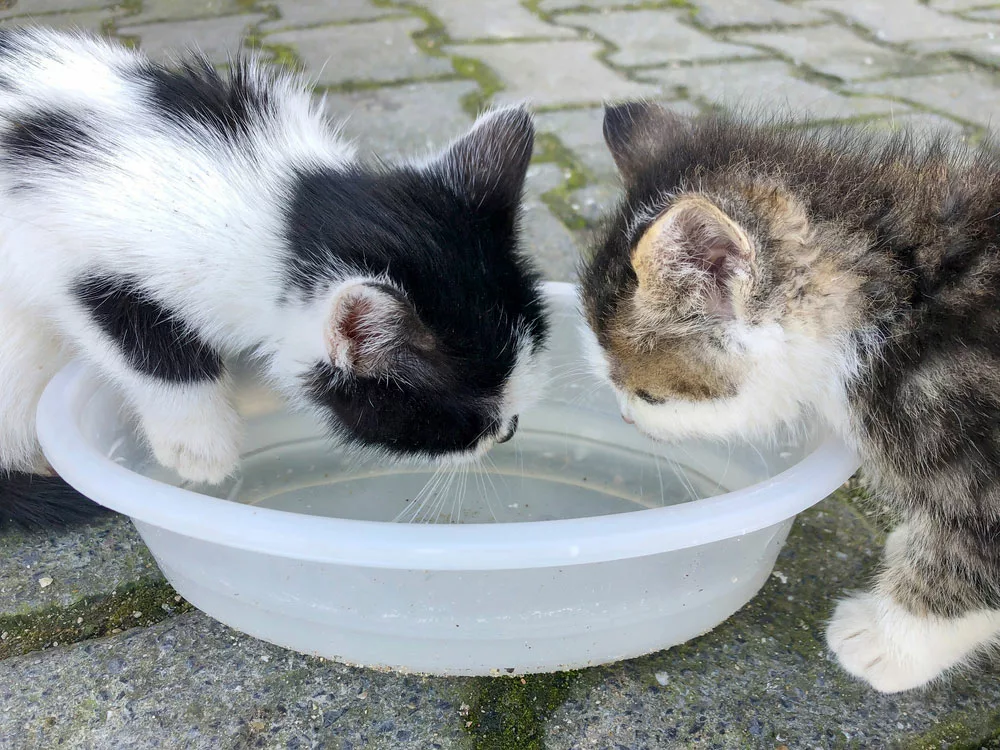
Two kittens are drinking water.
If your cat regurgitates frequently, limit its water intake after mealtimes. Overdrinking water after consuming a meal could trigger regurgitation in cats. Also, some cats cough after drinking excessive water fast. If they cough right after eating, they might throw up undigested content.
Brush Regularly
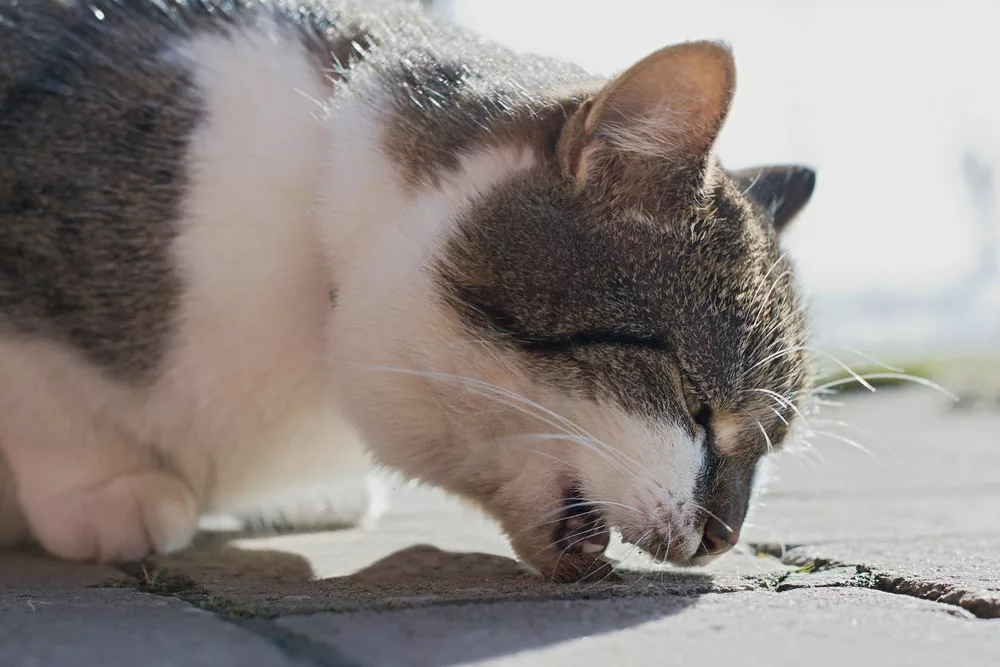
A cat is vomiting a hairball.
Brushing your cat regularly helps eliminate loose fur before your kitty swallows it during grooming. That helps to reduce the frequency of hairballs forming in the esophagus, thus, cutting down on regular hairball throw-ups. This strict grooming schedule is helpful if your cat is long-haired.
Conclusion
If your cat is vomiting or regurgitating, take it to the vet to rule out any underlying health issues. For more information on cat regurgitation vs. vomit, contact us today.
